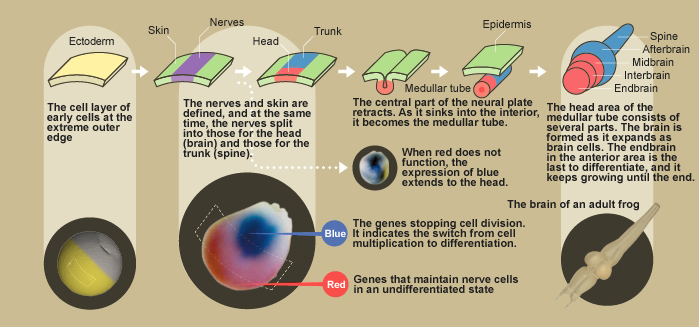|
The creation of the central nervous system starts with the differentiation of the trunk area (afterbrain, spine) and then continues with the head (forebrain, midbrain). The nerves in the head are maintained in an undifferentiated state for a longer time than those in the trunk. As a rule, the cells that have begun differentiation do not split, so there is undoubtedly a close connection between the determination of the brain area and cell multiplication. Studies show a mechanism in which the genes that function to halt the cell cycle begin their expression in the trunk, while limiting the expression of the genes in the head. Roughly speaking, it seems as if the brain is created as a result of the avoidance of differentiation into a specific character.

 An enlargement An enlargement
The area called the endbrain is created from the extreme anterior portion of the forebrain. In the neural region, it is the last to differentiate. The endbrain of the frog, which enters differentiation earlier than mammals, is not so large. In humans, however, the undifferentiated period is maintained for a long period, and the brain grows to a very large size, becoming the cerebral hemisphere. The combination of non-differentiation and cell multiplication is likely the factor that strictly determines brain form. To observe this process in detail, we began trials to construct a database of detailed three-dimensional images. We took an enormous number of thinly sliced cross-sections of embryos at different periods and analyzed them with a computer. We hope this is a good method for learning how cell multiplication and movement is linked to gene expression.
|
